calsfoundation@cals.org
Pike County
| Region: | Southwest |
| County Seat: | Murfreesboro |
| Established: | November 1, 1833 |
| Parent Counties: | Clark, Hempstead |
| Population: | 10,171 (2020 Census) |
| Area: | 600.34 square miles (2020 Census) |
| Historical Population as per the U.S. Census: | |||||||||
|
1810 |
1820 |
1830 |
1840 |
1850 |
1860 |
1870 |
1880 |
1890 |
1900 |
|
– |
– |
– |
969 |
1,861 |
4,025 |
3,788 |
6,345 |
8,537 |
10,301 |
|
1910 |
1920 |
1930 |
1940 |
1950 |
1960 |
1970 |
1980 |
1990 |
2000 |
|
12,565 |
12,397 |
11,792 |
11,786 |
10,032 |
7,864 |
8,711 |
10,373 |
10,086 |
11,303 |
|
2010 |
2020 |
|
|
|
|
|
|
|
|
|
11,291 |
10,171 |
|
|
|
|
|
|
|
|
| Population Characteristics as per the 2020 U.S. Census: | ||
| White |
8,681 |
85.4% |
| African American |
241 |
2.4% |
| American Indian |
94 |
0.9% |
| Asian |
16 |
0.2% |
| Native Hawaiian or Other Pacific Islander |
2 |
0.0% |
| Some Other Race |
509 |
5.0% |
| Two or More Races |
628 |
6.2% |
| Hispanic Origin (may be of any race) |
831 |
8.2% |
| Population Density |
16.9 people per square mile |
|
| Median Household Income (2019) |
$40,401 |
|
| Per Capita Income (2015–2019) |
$23,362 |
|
| Percent of Population below Poverty Line (2019) |
15.4% |
|
Pike County, an area of immense geological diversity, is home to the Crater of Diamonds State Park, an ancient volcanic crater and the eighth largest diamond deposit in the world. This is the only site where the public can search and keep what they find.
Pre-European Exploration through Early European Exploration
About 100 million years ago, during the Mid-Cretaceous period, the Gulf of Mexico extended to the middle of Pike County. The southern half of the county was under water. A volcanic explosion occurred during this period, leaving a crater of about eighty acres in area. The turbulent rotations of the earth caused diamonds to be pushed up to the surface from deep below. Not only diamonds are found here, but also amethysts, garnets, agates, quartz, and other stones and minerals, which makes the whole county popular with rockhounds. This lower half of the county is mostly flat, fertile bottom land, which is good for farming, while the northern half of the county lies in the foothills of the Ouachita Mountains and has a rocky terrain with fertile valleys between the mountains.
The first known residents of the region were Native Americans. Numerous settlements of Caddo Indians were scattered across southwest Arkansas, although no historic Caddo villages are known in the Pike County area. Remnants of the expedition of Hernando de Soto may have crossed southern Pike County seeking a land route to Mexico in 1542. In 1687, six survivors of René-Robert Cavelier, Sieur de La Salle’s expedition came near Pike County on their way to the Mississippi River, visiting a Caddo settlement in what is now Hot Spring County. The Red River Caddo and their neighbors were visited by the expedition of Domingo Téran as he mapped this area for the first time in 1691, and a Caddo village in present-day Hempstead County was the location of a trading post established by Jean-Baptiste Bénard de la Harpe in 1719. Around 1778, the Caddo left the area for land farther south. The Quapaw claimed much of this same region when they signed their first cession treaty with the United States government in 1818.
Louisiana Purchase through Early Statehood
Pike County was brought into the United States along with the rest of present-day Arkansas as a part of the Louisiana Purchase of 1803. On November 1, 1833, the territorial legislature created Pike County, named after explorer Zebulon Pike, out of Clark and Hempstead counties. Pike became the twenty-sixth county formed in Arkansas. Three men—Elijah Kelley, Rice Stringer, and John Dickson—were commissioned to find a place for a seat of justice. A temporary county seat was placed at the home of Pascal C. Sorrells. In 1836, a post office named Murfreesborough (later changed to Murfreesboro) was established; legend holds that settlers from Tennessee chose the name after their hometown. Until that point, the settlement had been known as the “Forks of the Missouri” or “Three Forks.” Courthouse fires in 1855 and 1895 destroyed many records pertaining to the history of the county, making investigation into its past difficult. The present courthouse was constructed in 1932.
Civil War through Reconstruction
The white population of the county was recorded at 3,798 in 1860 with 227 enslaved people listed.
Pike County men made up two full companies for the Confederate army in 1861. One company was the Fourth Arkansas Regiment Infantry (formerly Pike County Blues) which went to southwestern Missouri. Later, they returned to northwestern Arkansas and participated in the Battle of Pea Ridge. The other company became part of the Sixteenth Arkansas Infantry and also fought in the Battle of Pea Ridge. Murfreesboro was a winter quarters for the Confederate army in 1864. The soldiers kept in shape by having mock battles and horse races. Part of the time, Union soldiers were camped just eighteen miles east, around Antoine. These were part of General Frederick Steele’s command, which was involved in the Red River Campaign, including the Engagement at Poison Spring and the Engagement at Jenkins’ Ferry. A legend from the period demonstrates the pro-Confederate feelings of the many of the citizens of Pike County. While at Antoine, the Union soldiers allegedly came into contact with two young boys who had brought their corn to be ground at the local grist mill. The boys were seized by the Union soldiers, who reportedly hanged them from a large chinquapin tree and took their meal.
Before the outbreak of the Civil War, Pike County had one of the largest mills in Arkansas; it was connected to a dam on the Little Missouri River, northwest of Murfreesboro, which produced over 100 horsepower. The mill produced a gray cloth used to make Confederate uniforms. In the 1870s, the dam washed out and was rebuilt, using steam as an auxiliary power source until around 1890, when the plant was abandoned. The base of the dam is still visible in low water.
Two lynching incidents took place in the county in 1885, both involving white male victims. The Polk brothers were lynched for murder in September, and Sylvester Churchill was killed in October after being accused of murder .
Early Twentieth Century through the Modern Era
In 1900, Martin White Greeson, who owned property in Pike County and also owned and operated the Murfreesboro-Nashville Southwest RailRoad, started a campaign for a dam on the Little Missouri River to alleviate flooding. Congress finally approved the project in 1941 and authorized $3 million for it. The construction began on June 1, 1948, and finished on July 12, 1951. The dam was named Narrows Dam because of its narrow site. The lake was named Lake Greeson in honor of Martin Greeson.
John Wesley Huddleston, a farmer near Murfreesboro, discovered diamonds on a newly purchased tract of land. This discovery led to some attempts to mine the diamonds commercially, although this proved to be difficult.
Very few large crops are grown in the county in the twenty-first century. Cotton was dominant for decades, and then soybeans took cotton’s place. In the early 1900s, practically every settlement in the county had its own cotton gin, gristmill, and sawmill. By the 1920s, most of the forests had been cut over, and sawmills were no longer profitable . In 1930, cinnabar, the principal ore of mercury, was discovered in a six-mile-wide area stretching from eastern Howard County, extending all across Pike County, and ending in western Clark County. Companies began to mine this mineral, providing jobs for the citizens of the county. In 1931, mining was done both above and below surface; cinnabar was extracted from these mines until 1944. Some of the old, abandoned mines can still be seen around the shores of Lake Greeson.
The first recorded mining of gypsum in Arkansas was in 1922; it was mined by open-pit methods. A formation of gypsum is exposed in a narrow belt extending from the Little Missouri River westward into adjacent Howard County. The greatest thickness of this gypsum bed is a twelve-foot thickness at Plaster Bluff in Pike County. All the mining eventually moved to Howard County. This industry is one of several in nearby counties that provide employment to numerous citizens of Pike County, who commute to work outside their county.
On August 20, 1909, it was announced that railroad tracks were to be laid from Murfreesboro to Hot Springs (Garland County). This would allow passengers to travel by rail from Hot Springs to Texarkana. The first through service from Hot Springs to Texarkana was on March 3, 1915. The train also hauled freight, timber, and lumber. The rails were taken up from Murfreesboro to Hot Springs by 1926, though the daily run from Murfreesboro to Nashville (Howard County) continued until 1951. The demise of the railroad hurt the pulpwood contractors, who had to carry their raw product over the road.
In the spring of 1944, 300 German prisoners of war were housed in a camp situated one and one-half miles northwest of Murfreesboro; they remained until 1946 and worked part time with the peach harvest and the production of pulpwood. Electricity did not come to the rural areas of the county until after World War II.
Industry
Anthony’s Lumber Mill became the leading industry in Murfreesboro in 1928. John William Anthony built it up until it became one of the leading lumber mills in the South. Anthony retired in the 1940s, but the mill kept producing for many years with some of his sons in charge.
Highland, a settlement about five miles southwest of Murfreesboro, had the largest peach orchard in the United States in 1904. It consisted of about 4,600 acres, with 240,000 bushels of Elberta Peaches being shipped in a good year. Until about 1915, people came from all over the county in wagons to work in the orchards, but few peaches are grown in the county in the twenty-first century.
Pike County Memorial Hospital began serving the populace of Pike County and surrounding counties in 1958; it offers emergency room services, a cardiac care unit, laboratory and radiology services including ultrasound and physical therapy.
Curt Bean Lumber Company at Glenwood was the county’s largest industry. In 1992, Curt Bean invested several million dollars in order to build the most technologically advanced lumber mill in North America. The mill used a log-handling system that made extensive use of computers and lasers. It was one of the largest independently owned southern pine manufacturers in the United States. The mill later went out of business and reopened under different ownership, but not the same capacity.
Other industries include R. D. Plant Contracting Co., Inc., which produces asphalt and also sells rocks and gravel; Diamond City Trailer Manufacturing, which began in Murfreesboro in 1993 and builds boat trailers; and Sun Printing, Inc., a branch of a South Carolina printing company specializing in printing supplies for schools, churches, and businesses. In Murfreesboro, a hatchery for Tyson Foods, Inc., opened This hatchery oversees the hatching of approximately a million chicks per week.
Attractions
The area around Narrows Dam is known to be one of the best spots in Arkansas to hunt deer. Turkeys are also plentiful, also. A few sightings of black bears have been noted in the area. Below the dam is a rainbow trout fish hatchery, which is stocked by the Arkansas Game and Fish Commission from late fall until April. Fly fishing has grown to be a popular sport in this area.
Daisy State Park, a popular tourist destination, is on the north shores of the 7,000-acre Lake Greeson, about six miles west of Kirby. The Daisy area is noted as a good fishing area to catch black and white bass, stripers, crappie, catfish, and bluegill.
The county has three rivers. The Little Missouri enters at the northwest corner of the county, flows through the rocky Ouachita Mountains. As it travels south, it drops 1,035 feet before it runs into Lake Greeson above Daisy. This makes these upper waters excellent for experienced canoeists. The Caddo River is also a good river for floating and paddling. It flows out of the Ouachita Mountains and provides good rapids to navigate all the way to Glenwood. The Antoine River rises in the northeast part of the county and flows generally southeast past the town of Antoine. It follows the county’s eastern border, finally running into the Little Missouri River. All of these rivers are good fishing rivers, with plentiful bluegill, trout, catfish, crappie, and bass.
Crater of Diamonds State Park was established in 1972, and approximately 35,000 known diamonds have been found since then. This is the only place in North America where one can search for diamonds and keep one’s findings.
Among the communities in the county are Pike City, Kimberley, Nathan, Newhope, Caney Valley, Billstown, and Pisgah.
Education
There are numerous little settlements scattered around the county which, in early days, had their own schools and churches. Usually, the same building served both. Smaller schools began to consolidate with larger ones until finally, by the year 1976, only the four largest ones were left: Murfreesboro, Delight, Kirby, and Glenwood. Additional consolidation took place over the subsequent decades. Murfreesboro and Kirby maintain school districts in the twenty-first century, with Delight students attending the South Pike School District in Murfreesboro. Glenwood’s high school consolidated with nearby Amity (Clark County), and a new school was built between the two towns near Rosboro on Highway 8, southeast of Glenwood, named Centerpoint. A Christian school also operates in the area. All four towns have Head Start pre-schools. One Rosenwald School still remains at Antoine, about five miles east of Delight. It was built in the Colonial Revival style and is on the National Register of Historic Places. The building is still being used as a meeting hall and other events. The schools in Murfreesboro integrated in 1965 with leadership from African American teacher Alice Preston.
Famous Residents
Grammy winner Glen Campbell, who was inducted into the Country Music Hall of Fame in 2005, was born about six miles southwest of Delight at Billstown in 1936. His parents were Wes and Carrie Campbell. Some of his most popular songs are “By the Time I Get to Phoenix,” “Galveston,” and “Rhinestone Cowboy.”
For additional information:
Early History of Pike County, Arkansas: The First Hundred Years. Murfreesboro, AR: Pike County Archives and History Society, 1989.
The Gems of Pike County, Arkansas. Murfreesboro, AR: Pike County Archives and History Society (1990–).
Pike County Archives: A Look at the Past. Murfreesboro, AR: Pike County Archives and History Society, 1995.
Pike County, Arkansas: History and Families, 1833–2023. Sikeston, MO: Acclaim Press, 2024.
Pike County Archives and History Society. http://www.pcahs.org/ (accessed September 23, 2022).
Doris Russell Foshee
Murfreesboro, Arkansas
Revised 2022, David Sesser, Southeastern Louisiana University
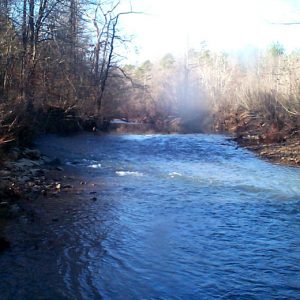 Caddo River
Caddo River 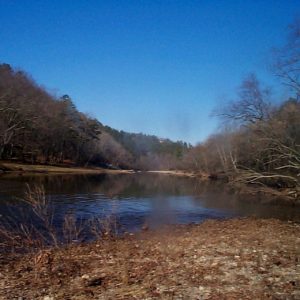 Caddo River
Caddo River  Glen Campbell
Glen Campbell 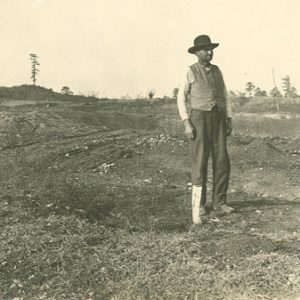 Crater of Diamonds
Crater of Diamonds  German POW Camp
German POW Camp 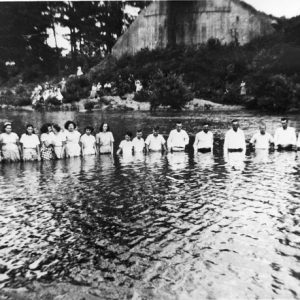 Glenwood Baptism
Glenwood Baptism 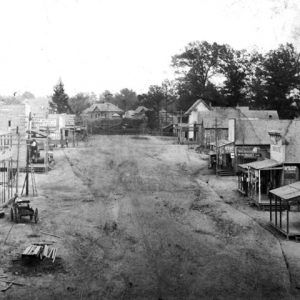 Glenwood Main Street
Glenwood Main Street  Glenwood Newspaper
Glenwood Newspaper 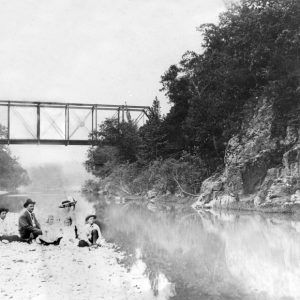 Glenwood Railroad Bridge
Glenwood Railroad Bridge 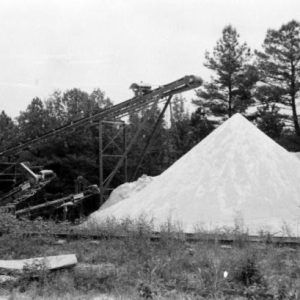 Gypsum Mining
Gypsum Mining  Highland Orchard
Highland Orchard 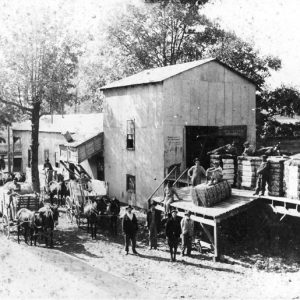 Murfreesboro Cotton Warehouse
Murfreesboro Cotton Warehouse 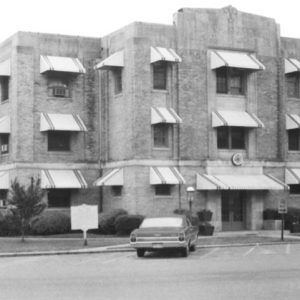 Pike County Courthouse
Pike County Courthouse 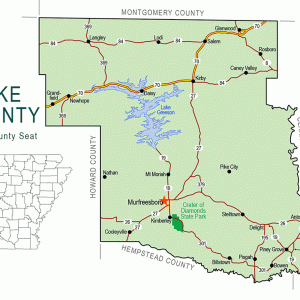 Pike County Map
Pike County Map  Zebulon Pike
Zebulon Pike 




Comments
No comments on this entry yet.